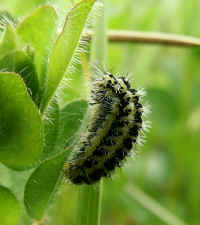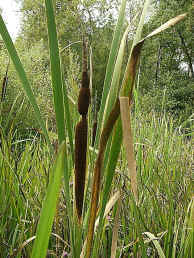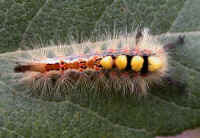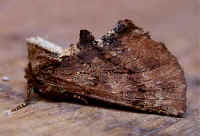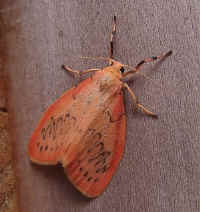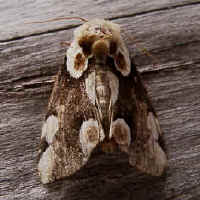Mothathon Overview - continued
A 48 hr Moth catching
extravaganza at the Woodland Education Centre,
together with some general observations on Moths in Britain.
Previous
page
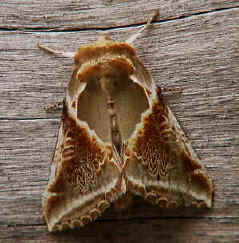
| Habitats and Food Plants | ||||||||||||
The adults of most species of moths feed on nectar. However, there are exceptions. The adults of moths such as emperors and eggars, as well as the winter-flying species, do not feed at all. One usually expects to find the adult moths in the same general vicinity as the caterpillar food plants. While this is not always true, it is often the case, either because the moths have recently emerged, or because the females are egg-laying on the caterpillar food plants. Many plant species will support moth caterpillars of one type or another. Some, including oaks, may support a great variety of different moths, while others such as the poisonous ragwort, may have only a few species associated with them. In general, the more different plant species there are in an area, the greater the number of moth species which are likely to be found. This is a result of the variety of food plants available. The Woodland Education Centre contains a great diversity of habitats within a relatively small area. The resulting wide range of plant species available gives rise to a diverse moth fauna. Thus, many species (178), characteristic of a range of different habitat types, were trapped over the weekend of the Mothathon.
Brown China-mark moths are one of the few moth species to have a caterpillar with an aquatic lifestyle. The caterpillars live underwater, in carefully constructed envelopes made out of the leaves of plants such as water lilies, which they also feed on.
July Highflyer, which was the second most dominant species found during the Mothathon, has caterpillars which will feed on willow. Other examples include Large Emerald and the Poplar Hawk-moth. Alder also supports a variety of the moths which were trapped, including Bordered Beauty and Scallop Shell. The coniferous trees at the Centre provide food for the caterpillars of Barred Red, Tawny-barred Angle and Black Arches. The Black Arches caterpillars are not too fussy over their food plants and will also feed on deciduous trees such as oaks. This obviously contributed to the predominance of this species in the catch over the weekend.
The Dun-bar provides an unusual and interesting departure from the norm, in having caterpillars which not only feed on oak and birch, but which are also predacious, attacking the caterpillars of other species.
The caterpillars of Small Fan-footed Wave, another quite common species in the traps, make use of a slightly different resource, feeding on fallen decaying leaves in the woodland, as well as on grasses and other low growing plants. Many types of woodland include a great variety of plants other than trees. Clearings, paths, rides and the more open areas of woodland will all have a range of low growing herbs and shrubs. These provide additional food plants for a host of other species.
Nettles provide food for the Snout, Mother of Pearl and Yellow Shell. A variety of grasses are eaten by Straw Dot, Common Rustic and The Clay, while Willowherbs provide food for the caterpillars of Small Phoenix and Elephant Hawk-moth.. The Devonshire Wainscot which was trapped was a slightly unusual record, in that this species is normally associated with coastal habitats. However, there are a few records of this species from inland areas and the Centre is only 5 miles from the coast. The weather around this time was also very windy which would have favoured its dispersal inland. This illustrates another point, which is that moths are not always found where they have emerged and can travel long distances, both flying and blown on the wind. Some species, such as Dark Sword-grass and Silver Y, migrate seasonally.
|
